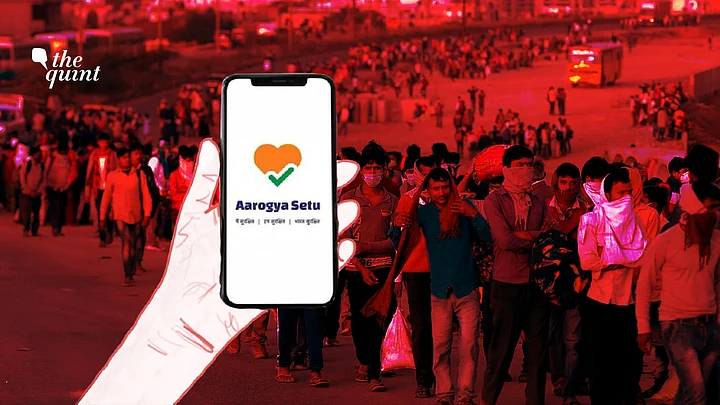The Aarogya Setu app is a coronavirus tracking application launched by the government of India to keep a track of the number of cases in an area and curb the spread of the infection.
On smartphones, the Aarogya Setu app uses Bluetooth and GPS technology to keep track of the movement of an infected person and then alert citizens about areas that person has been to and demarcate them as vulnerable spots.
But what about non-smartphones? How does the Aarogya Setu platform work on feature phones without Bluetooth or GPS?
Let’s take a look.
Cellular Triangulation
In the absence of GPS technology, another method to track the movement of an individual is by cellular triangulation of his phone.
Cellular triangulation is a technology that uses multiple cell towers to track a phone’s location by measuring the time delay that a signal takes to return back to the towers from the phone.
A cell signal may be picked up by three or more towers for triangulation to work. The position where the signals overlap each other is the spot where the person is. The cell tower broadcasts its location continuously and by knowing the distance of the tower to the phone the location of the person can be calculated with average accuracy.
French ethical hacker Elliot Alderson also pointed out about the app's capability to use this technology to track people but the app’s developers did not accept it was using triangulation and their response was vague.
If this form of tracking is done without permission from the users, it can be considered a breach of privacy.
Unstructured Supplementary Service Data (USSD)
USSD is another technology that can be used for contact tracing and does not need a smartphone to work.
It runs on a network and not the user’s device and doesn’t have to be installed on a phone which is ideal for non-smartphones as they have limited storage space.
A simple way to understand how USSD works is through banking via a feature phone.
The National Payments Corporation of India launched a National Unified USSD Platform service in 2012 which lets people carry out banking transactions without the internet. A user can dial specific codes on the phone and transfer money using their UPI ID to someone else’s account.
To understand how USSD would help in tracking COVID-19 we spoke with Aiisma which is a data marketplace app that is also using USSD technology to track COVID-19.
According to Aiisma, “unlike apps installed on smartphones, feature phone users will be propagated with options, of which they can select one. This will be facilitated by their service provider. Basic handsets too share the location information via cell towers with the telecom service provider. If the user gives consent, this feature using USSD will gain access to information and share it with Aiisma ecosystem.”
One common example of how we use USSD is while checking the prepaid balance on our phones using codes like *123#. All the user is doing is giving approval to the carrier in a text format to activate or deactivate the service.
Rural users also share permission to share the location with Aiisma Ecosystem.*888# would give them the option to share their Geolocation. The telecom carrier would have approval wherein they will share the geolocation with Aiisma. The app ecosystem captures health data on a daily basis.Ankit Chaudhari, CEO & Founder, Aiisma
Interactive Voice Response System (IVRS)
To cover the landline and feature phone spectrum, the government of India launched the Aarogya Setu IVRS across the country.
This is a toll-free service where a person needs to give a missed call to 1921 after which they will receive a call asking about their health. The service is available in 11 languages.
The questions asked are aligned with the Aarogya Setu app. Once the answers are received the person will get a health status confirmation and steps they have to take moving forward.
This method is a viable option to report or register positive cases and take action. Tracking an infected person via IVRS is difficult as the call can be made from a landline as well.
The government says that the data collected is added to the national Aarogya database.
